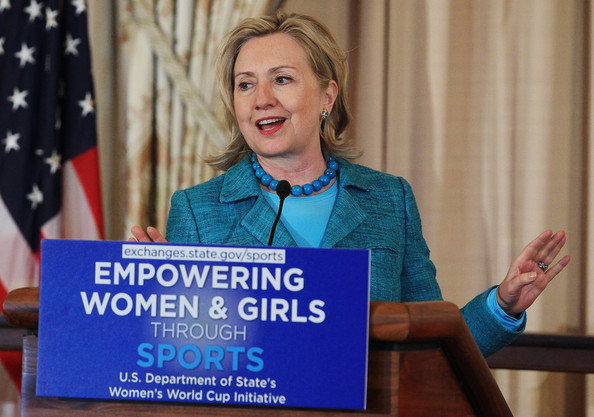
Girl Power
In less than a hundred years, the United States transformed from women not being able to vote to a female candidate in the presidential election. The different branches of the feminist movement has consumed social media. Women’s Gender and Sexuality Studies can be found at the majority of universities. Gender can be analyzed and found in most every situation today. Although women have accomplished great feats, the 2016 presidential election contains more history concerning gender than the first female presidential candidate.
Clinton and Trump have created the “largest gender gap of any election in [U.S.] history” (Waldman). This year, the gender gap has been found to heavily support the Democratic party. This gap is to be expected because both candidates have discussed gender in their campaigns. Clinton has participated in various feminist campaigns, one campaign focussed on Women in Leadership took place at Wake, and Trump has critiqued Hillary for “playing the woman’s card” (Chozick and Parker). The statistics are further proof of the gap. Women are “90 percent less likely to have favorable views of Trump than men are” (Pollard 9). Half of women, in a different study, say they have a “very unfavorable” view of Trump (Waldman). A ten percentage gender gap in 2012 moved to sixteen points in mid-June of this year (Chaturvedi). Overall, women can be seen as more supportive of Hillary in the election.
Historically, this gender gap is not news. Women have been leaning towards the Democratic Party since 1992 (Chaturvedi). Studies suggest that the values associated with the Democratic Party could explain this. Furthermore, women have been found to emphasize the treatment of “racial and ethnic minorities, the environment, abortion, gay rights, and lesbian and transgender people” (Chaturvedi). Before the shift in the 90s, men and women had similar voting tendencies (Waldman). Now, it has been “28 years since a Republican won a majority of women voters” (Waldman). More recently, women have “voted at higher rates than men in the last 9 elections” (Chaturvedi). Throughout time, women have supported the Democratic party, but gender’s presence in society today has especially influenced the election.